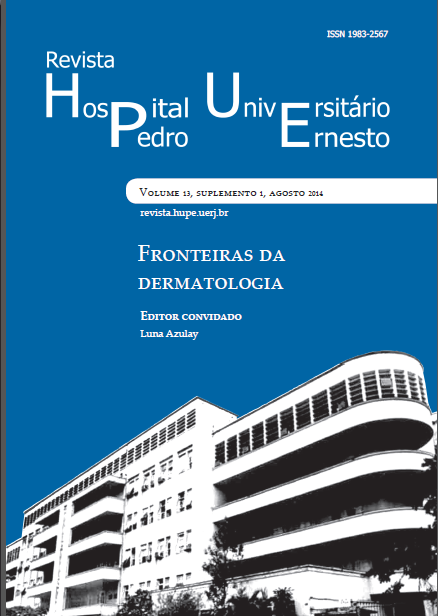Câncer de pele: a importância do seu diagnóstico, tratamento e prevenção
DOI:
https://doi.org/10.12957/rhupe.2014.12256Resumo
O câncer de pele é a doença mais comum em caucasianos em todo o mundo. O câncer de pele não melanoma (CPNM) é responsável por mais de 90% de todos os cânceres de pele. Dados referem que a incidência de CPNM está aumentando a cada ano, especialmente entre os jovens. O carcinoma de células escamosas representa 25% de todos os CPNM, enquanto o carcinoma basocelular é mais frequentemente diagnosticado, correspondendo a 70% dos casos, podendo chegar a afetar mais de um milhão de pessoas a cada ano. Essas estimativas estão aumentando em todo o mundo, e no Brasil não é diferente. Apenas para este ano, estimou-se cerca de 200.000 novos casos de CPNM, detectando na população um aumento de 88% no risco de desenvolvimento de CPNM após quatro anos. Por isso, os médicos devem estar atentos para identificar uma lesão de NMSC e tratá-la corretamente, a fim de evitar a recorrência e a persistência do tumor. Considerando que cada lesão de CPNM é única e o seu tratamento deve ser direcionado para cada tipo de paciente, as técnicas cirúrgicas e não cirúrgicas estão sendo desenvolvidas para alcançar a remissão completa do tumor, preservando o tecido normal, a função da área comprometida e para atingir um melhor resultado estético. Portanto, aprender sobre o desenvolvimento CPNM, bem como seu diagnóstico e tratamento, pode impactar nas medidas de saúde pública e contribuir para a prevenção de novos casos.
Descritores: Neoplasias cutâneas; Carcinoma basocelular; Carcinoma de células escamosas.
Revista HUPE, Rio de Janeiro, 2014;13(Supl. 1):76-83
doi: 10.12957/rhupe.2014.12256


